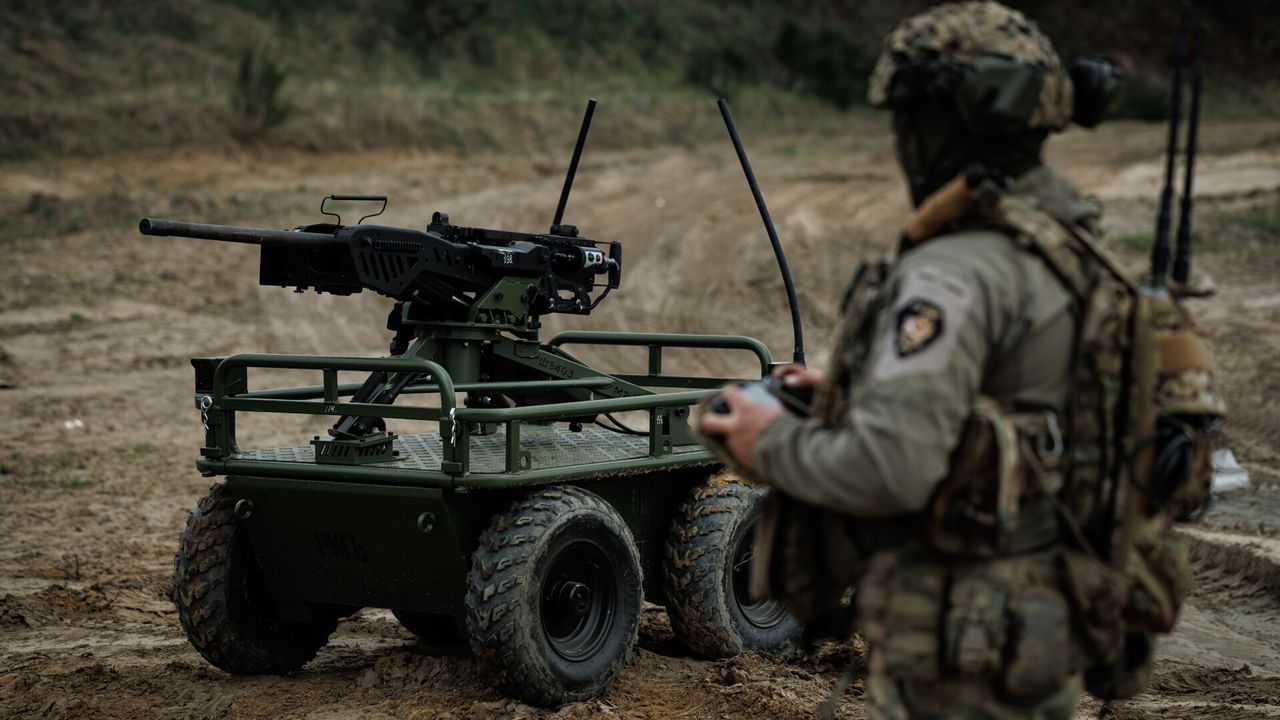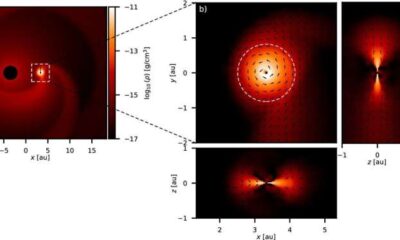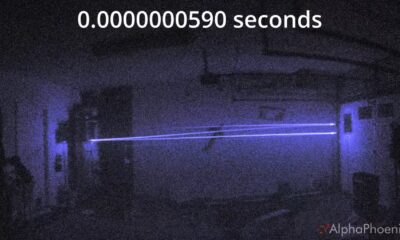Science
Ukraine Innovates to Overcome Starlink’s Bandwidth Limitations

Ukraine is facing significant challenges in utilizing ground robots effectively in its ongoing conflict with Russia due to limitations imposed by the bandwidth of SpaceX’s Starlink satellite internet. The country’s tech innovators are now seeking innovative solutions to enhance the operational capabilities of these robots on the battlefield.
Over the past year, Ukraine has deployed thousands of unmanned ground vehicles (UGVs) to frontline military units. These robots assist in various tasks, including supply delivery, evacuation of the wounded, and even direct engagements with Russian forces. However, the bandwidth provided by Starlink often restricts individual terminals mounted on the UGVs to a mere 10 megabits per second. This low data rate severely impacts the quality of the video feeds required for effective control, especially during fast maneuvers.
Vadym Burukin, the CEO of drone start-up Huless, highlighted the critical need for speed in controlling these robots. “If you want to drive fast, you need a frame rate of at least 30 frames per second to be able to control the robot,” Burukin explained. Operating at reduced frame rates increases the risk of accidents, such as colliding with obstacles or entering minefields.
The high demand for Starlink services in Ukraine has led to approximately 200,000 terminals being active, making it the largest user of Starlink in Europe. This extensive usage, particularly in frontline areas, limits the speed of the UGVs to around 6 miles per hour (10 kilometers per hour). As noted by Andriy Dovbenko, CEO of the Ukrainian Tech Exchange, this slow pace can result in prolonged exposure to threats, particularly in the 12-mile-wide (20-kilometer) grey zone where both troops and equipment are vulnerable to attacks from Russian drones.
Moreover, Starlink terminals are prone to disruptions caused by vibrations from traversing rugged terrain, as well as environmental factors like clouds and rain, which can further weaken the signal. In response to these challenges, Ukrainian tech innovators have begun exploring alternatives to enhance the robots’ operational effectiveness.
One promising solution involves the use of tethered drones equipped with signal repeaters. These drones can ascend to heights of 500 feet (150 meters) and extend the range of radio signals significantly. Burukin noted, “With a repeater in the air, this range extends to 40 plus kilometers (25 miles).”
The airborne repeaters not only improve ground-to-ground communication but also allow for greater operational distances for flying drones, which can reach up to 48 miles (80 kilometers) from their controllers. This capability enables Ukrainian forces to conduct exploratory missions deep into Russian-controlled areas without the constant fear of losing their Starlink connection. “Recently, we were able to get all the way to the Donbas arena, a big stadium in the center of Donetsk,” Burukin stated, showcasing the effectiveness of their new technology.
Despite the innovations, Starlink remains a crucial asset for Ukraine. Dovbenko emphasized its importance, stating, “There are many uses for Starlink in the war, but it’s not been developed specifically as a military technology, so it has its limitations.” He acknowledged the challenges in producing a viable alternative to Starlink at scale, suggesting that while innovations are essential, the capabilities of existing technology are still necessary for military operations.
Furthermore, advancements in AI-powered autonomous navigation systems are being explored to mitigate issues related to signal jamming and disruptions. These systems aim to reduce reliance on real-time human oversight, thereby making military robots less vulnerable to radio jamming and potential Starlink signal loss. Although fully autonomous machines may not completely replace human soldiers, they could significantly minimize the personnel required in high-risk frontline situations.
As Ukraine continues to adapt to the challenges posed by its ongoing conflict, the integration of innovative technologies and alternative solutions will play a crucial role in enhancing its military capabilities. The efforts of Ukrainian innovators reflect a broader commitment to leveraging technology in the face of adversity, ensuring the nation remains resilient in its fight for sovereignty.
-

 Science2 months ago
Science2 months agoOhio State Study Uncovers Brain Connectivity and Function Links
-

 Politics2 months ago
Politics2 months agoHamas Chief Stresses Disarmament Tied to Occupation’s End
-

 Science1 month ago
Science1 month agoUniversity of Hawaiʻi Joins $25.6M AI Project for Disaster Monitoring
-

 Entertainment2 months ago
Entertainment2 months agoMegan Thee Stallion Exposes Alleged Online Attack by Bots
-

 Science4 weeks ago
Science4 weeks agoALMA Discovers Companion Orbiting Giant Star π 1 Gruis
-

 Science2 months ago
Science2 months agoResearchers Challenge 200-Year-Old Physics Principle with Atomic Engines
-

 Entertainment2 months ago
Entertainment2 months agoPaloma Elsesser Shines at LA Event with Iconic Slicked-Back Bun
-

 World1 month ago
World1 month agoFDA Unveils Plan to Cut Drug Prices and Boost Biosimilars
-

 Business1 month ago
Business1 month agoMotley Fool Wealth Management Reduces Medtronic Holdings by 14.7%
-

 Top Stories2 months ago
Top Stories2 months agoFederal Agents Detain Driver in Addison; Protests Erupt Immediately
-

 Entertainment1 month ago
Entertainment1 month agoBeloved Artist and Community Leader Gloria Rosencrants Passes Away
-

 Science2 months ago
Science2 months agoInnovator Captures Light at 2 Billion Frames Per Second









